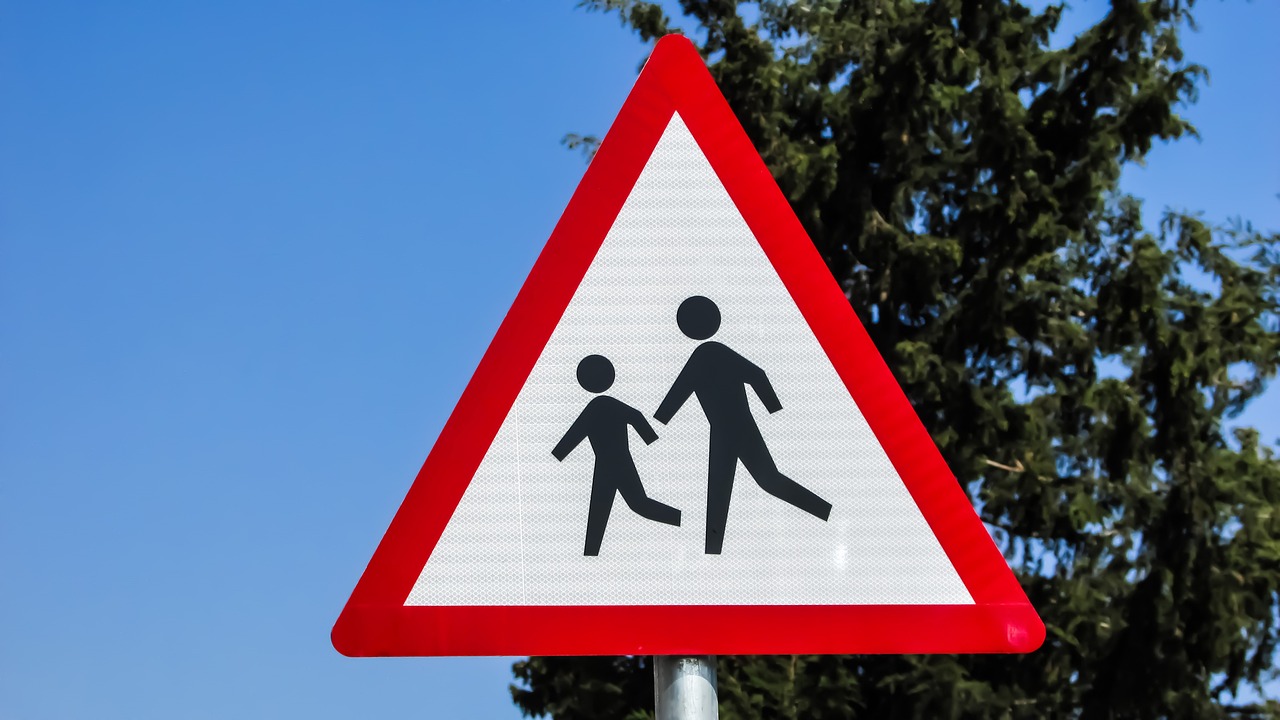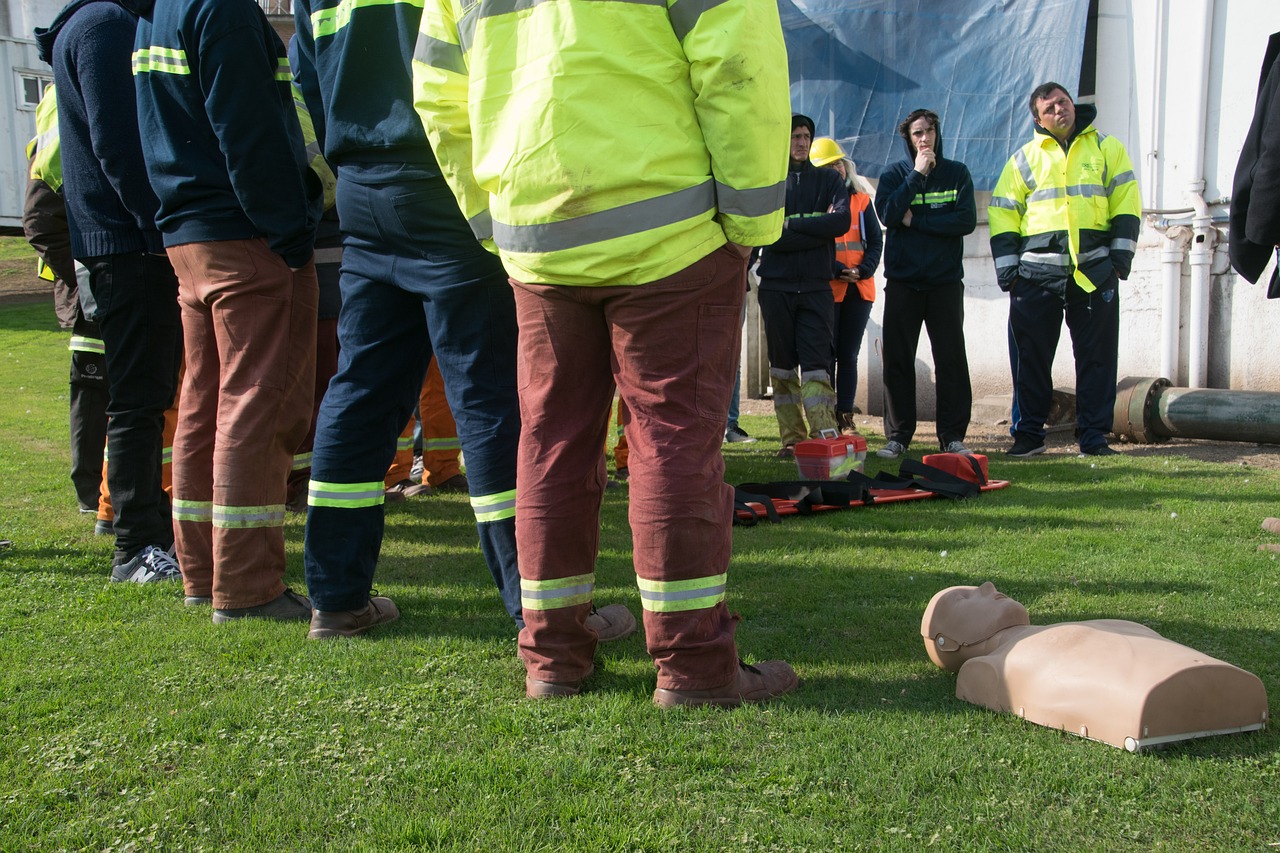Decoding Safety Measures – The Relevance of Human Behavior
In today's fast-paced world, the importance of safety measures cannot be overstated. But what if I told you that the effectiveness of these measures often hinges on something as unpredictable as human behavior? That's right! Understanding the intricate relationship between how we think, feel, and act can significantly enhance safety protocols across various environments. Whether it's in the workplace, at home, or in public spaces, the way individuals perceive and respond to risks plays a crucial role in determining safety outcomes.
Imagine a construction site bustling with activity. Workers are often equipped with helmets, harnesses, and safety gear, yet accidents can still occur. Why? Because safety is not just about the equipment or protocols in place; it's about how people behave in the face of potential danger. When we delve into the psychology of risk perception, we uncover a fascinating landscape where emotions, cognitive biases, and social influences intertwine, shaping our decisions and actions. This article aims to shed light on these factors, exploring how a deeper understanding of human behavior can lead to more effective safety measures.
As we navigate through this exploration, we'll discover that safety is not merely a set of rules to follow; it's a culture that must be cultivated. By recognizing the psychological underpinnings of our choices, we can create environments where safety becomes second nature. So, buckle up as we decode the nuances of safety measures and the vital role human behavior plays in enhancing our collective well-being.
When we think about safety, the first thing that usually comes to mind is the tangible measures we can take—like wearing a seatbelt or using protective gear. However, the psychology of risk perception is a critical factor that influences how people assess potential dangers. Individuals do not always evaluate risks logically. Instead, their judgments are often swayed by personal experiences, emotions, and even societal norms.
For instance, consider a person who has never been in a car accident. They might perceive driving as relatively safe, leading them to take unnecessary risks, such as texting while driving. On the other hand, someone who has experienced a close call may become overly cautious, avoiding driving altogether. This dichotomy illustrates how our perception of risk can vary significantly from one individual to another, impacting their behavior and adherence to safety measures.
Now, let's dive into the world of cognitive biases—those pesky mental shortcuts that can lead to flawed decision-making. When it comes to safety, these biases can be particularly dangerous. For example, the optimism bias leads individuals to believe that they are less likely to experience negative outcomes compared to others. This can result in a false sense of security, prompting risky behaviors.
Awareness of these biases is crucial. By recognizing how they influence our decisions, we can take proactive steps to mitigate their effects. For instance, organizations can implement training sessions that highlight common cognitive biases and encourage employees to question their assumptions. By fostering a culture of awareness, we can significantly improve safety outcomes.
Emotions are powerful drivers of behavior, and they play a pivotal role in risk assessment. Fear, anxiety, and even overconfidence can skew our judgment when it comes to safety. When individuals experience fear, they may comply with safety measures out of necessity. However, excessive fear can lead to avoidance behaviors, where people shy away from situations altogether, potentially increasing their risk in other ways.
While a healthy fear of danger can promote compliance with safety protocols, it's essential to strike a balance. Too much fear can paralyze individuals, making them less likely to engage in necessary safety practices. For example, a worker who is overly fearful of heights may refuse to use a harness, ironically putting themselves at greater risk. Therefore, it's vital to cultivate a safety culture that encourages adherence without overwhelming individuals with fear.
Conversely, overconfidence can lead individuals to underestimate risks, resulting in reckless behavior. This is particularly evident in high-stakes environments, such as construction sites or laboratories. By fostering realistic self-assessments and encouraging open discussions about potential dangers, organizations can help individuals recognize their limits and make safer choices.
Social dynamics also play a significant role in shaping safety behavior. Peer pressure, group norms, and cultural factors can either reinforce or undermine adherence to safety protocols. For instance, if a team member consistently disregards safety measures, others may feel compelled to follow suit, creating a dangerous precedent.
To combat this, organizations should promote a culture of accountability, where individuals feel empowered to speak up about unsafe practices. By fostering an environment of support and encouragement, we can create a collective commitment to safety that transcends individual behavior.
Training and education are vital components of promoting safe behaviors. Comprehensive safety training programs not only equip individuals with the knowledge they need but also foster a culture of safety within organizations. These programs should be engaging and interactive, allowing participants to actively participate in discussions and simulations.
Clear communication is essential for effective safety training. Utilizing various communication strategies—such as visual aids, hands-on demonstrations, and real-life scenarios—can help convey safety information in meaningful ways. Engaging participants in discussions about safety can also enhance their understanding and retention of critical information.
Finally, safety measures must evolve with changing circumstances. Continuous learning and adaptation are crucial for maintaining effective safety protocols in various environments. Regularly reviewing and updating safety measures ensures that organizations remain responsive to new challenges and emerging risks.
- What are cognitive biases? Cognitive biases are mental shortcuts that can lead to flawed decision-making, particularly in assessing risks.
- How can emotions affect safety behavior? Emotions like fear and overconfidence can significantly influence how individuals perceive risks and adhere to safety measures.
- Why is training important for safety? Training equips individuals with the knowledge and skills necessary to make safe choices and fosters a culture of safety within organizations.
- How can organizations promote a safety culture? By encouraging open communication, accountability, and continuous learning, organizations can create a strong commitment to safety among their members.

The Psychology of Risk Perception
Understanding how individuals perceive risks is crucial for developing effective safety measures. Our brains are wired to assess danger, but this process is not as straightforward as it seems. In fact, it’s influenced by a myriad of psychological factors that can skew our judgment. For instance, have you ever noticed how some people fear flying more than driving, even though statistically, flying is safer? This discrepancy is rooted in our risk perception, which can be shaped by personal experiences, cultural background, and even media portrayals.
One of the most significant aspects of risk perception is how individuals assess the likelihood of negative outcomes. This is where cognitive biases come into play. Cognitive biases are systematic patterns of deviation from norm or rationality in judgment. They can lead us to either overestimate or underestimate risks based on emotions rather than facts. For example, the availability heuristic can cause someone to fear shark attacks more than heart disease simply because shark attacks are more sensationalized in the media. This shows how our emotional responses can cloud our judgment about what is truly dangerous.
Moreover, the framing effect plays a critical role in risk perception. How information is presented can significantly influence our decisions. For example, if a safety measure is framed as having a "90% success rate," it may seem more appealing than one framed as having a "10% failure rate," even though they convey the same information. This subtlety can lead to misinformed decisions that jeopardize safety. Understanding these psychological nuances is essential for creating safety protocols that resonate with people's perceptions and encourage compliance.
In addition to cognitive biases, our social environment also shapes how we perceive risks. Social norms and peer influences can either bolster or undermine our sense of safety. If a group of friends decides to engage in risky behavior, such as skipping safety gear while biking, an individual may feel pressured to conform, despite knowing the risks involved. This highlights the importance of creating a culture that prioritizes safety, where positive behaviors are reinforced and risky behaviors are discouraged.
In summary, the psychology of risk perception is a complex interplay of cognitive biases, emotional influences, and social dynamics. By understanding these factors, organizations can design safety measures that not only address the actual risks but also align with how people perceive those risks. This alignment is crucial for fostering a safer environment, whether at home, in the workplace, or in public spaces.
- What is risk perception? Risk perception refers to the subjective judgment that people make about the characteristics and severity of a risk.
- How do cognitive biases affect risk perception? Cognitive biases can lead individuals to misjudge the likelihood or severity of risks, often leading to unsafe decisions.
- Why is social influence important in safety measures? Social influences can significantly affect an individual's behavior, making it essential to foster a culture of safety to encourage compliance with safety protocols.

When it comes to making decisions that can impact safety, our brains often play tricks on us. Cognitive biases are mental shortcuts that can lead to flawed judgments and decisions. These biases can be particularly dangerous in high-stakes environments, where a single miscalculation could result in severe consequences. Understanding these biases is essential for improving safety outcomes and ensuring that individuals make more informed choices in risky situations.
One common cognitive bias is the availability heuristic. This occurs when people rely on immediate examples that come to mind when evaluating a specific topic or decision. For instance, if someone recently heard about a workplace accident, they might overestimate the likelihood of such an event occurring again, leading to either excessive fear or unnecessary compliance with safety measures. On the flip side, if they haven't experienced or heard of an incident in a long time, they may underestimate the risks involved, thinking, "It won't happen to me." This inconsistency can create a dangerous environment where safety protocols are either ignored or followed without genuine understanding.
Another significant bias is confirmation bias. This is the tendency to search for, interpret, and remember information in a way that confirms one’s pre-existing beliefs. In a safety context, if a worker believes that a certain safety procedure is unnecessary, they may only pay attention to instances where that procedure was bypassed without incident, ignoring evidence that supports its importance. This selective thinking can undermine safety measures and lead to complacency, ultimately increasing the risk of accidents.
Moreover, the optimism bias can also play a crucial role in decision-making. This bias leads individuals to believe that they are less likely to experience negative events compared to others. For example, a construction worker might think, "I’m experienced; I know how to handle this safely," while ignoring the inherent risks involved. This overconfidence can result in risky behaviors, such as neglecting to wear protective gear or skipping safety checks, which can have dire consequences.
To combat these biases, organizations can implement training programs that not only educate employees about safety protocols but also highlight the psychological factors that influence their decisions. By raising awareness of cognitive biases, employees can learn to recognize their own thought patterns and make more rational, safety-focused choices. For example, incorporating real-life scenarios and role-playing exercises can help individuals understand the impact of biases on their decisions, fostering a culture where safety is prioritized and understood.
Additionally, organizations can encourage an open dialogue about safety concerns. When employees feel comfortable discussing their fears and uncertainties, it can lead to a more thorough examination of safety practices and a collective effort to address potential biases. This collaborative approach not only enhances safety but also builds trust among team members, creating a supportive environment where everyone is invested in maintaining a safe workplace.
In conclusion, cognitive biases significantly influence safety decisions, often leading to poor judgment and risky behaviors. By understanding and addressing these biases, organizations can improve their safety protocols and foster a culture of awareness and compliance. Recognizing the psychological factors at play is not just a theoretical exercise; it’s a practical step towards ensuring that safety measures are adhered to and that individuals are equipped to make sound decisions in the face of risk.
- What are cognitive biases? Cognitive biases are systematic patterns of deviation from norm or rationality in judgment, affecting the decisions and judgments that people make.
- How do cognitive biases affect safety decisions? They can lead to flawed judgments, causing individuals to underestimate risks or overestimate their ability to handle dangerous situations.
- What can organizations do to mitigate the effects of cognitive biases? Organizations can provide training that educates employees about these biases and encourages open discussions about safety concerns.
- Can awareness of cognitive biases improve safety outcomes? Yes, by making individuals aware of their biases, they can make more informed and rational safety decisions.

Emotions are not just fleeting feelings; they are powerful drivers of our behavior, especially when it comes to assessing risks. Have you ever noticed how fear can grip you in a moment of danger? This instinctive reaction is more than just a survival mechanism; it shapes the way we make decisions. When faced with potential hazards, our emotional state can either cloud our judgment or lead us to make sound choices. For instance, someone who feels anxious about a certain task may overestimate the risks involved, while another person, feeling overconfident, might underestimate the dangers. This emotional rollercoaster influences not just individual decisions but also collective behaviors in groups and organizations.
To truly understand the impact of emotions on risk assessment, we can break it down into a few key emotional states:
- Fear: While fear can lead to cautious behavior and adherence to safety protocols, excessive fear can result in avoidance. Imagine someone who fears flying; they might avoid air travel altogether, missing out on opportunities.
- Anxiety: This can lead to paralysis by analysis, where individuals become so overwhelmed by potential risks that they fail to take necessary actions.
- Overconfidence: This emotion can be particularly dangerous. When individuals believe they are invulnerable, they may engage in risky behaviors, like driving recklessly or ignoring safety gear.
It's crucial to strike a balance between these emotional states to foster a culture of safety. For example, organizations can implement training that not only addresses the technical aspects of safety but also the emotional responses individuals may experience. By encouraging open discussions about feelings related to risks, companies can help employees recognize their emotions and respond to them constructively. This proactive approach can significantly enhance overall safety outcomes.
In conclusion, emotions play a pivotal role in how we assess risks and make decisions. By understanding and addressing these emotional factors, we can create better safety protocols that not only inform but also engage individuals on a deeper level. After all, safety is not just about rules and regulations; it's about the people who follow them and the emotions that guide their choices.
- How do emotions affect decision-making in risky situations?
Emotions can cloud judgment, leading to either overestimation or underestimation of risks. Understanding these emotions can help individuals make more informed decisions. - Can training reduce the impact of negative emotions on safety?
Yes, effective training can help individuals recognize and manage their emotions, leading to better adherence to safety protocols. - What role does organizational culture play in emotional responses to risk?
A supportive organizational culture can foster open discussions about emotions, helping employees feel safe to express their concerns and questions regarding risks.

Fear is a powerful emotion that can significantly influence human behavior, especially when it comes to compliance with safety measures. It's fascinating how a little bit of fear can act as a motivator, pushing individuals to follow guidelines that might otherwise be ignored. Think of it this way: when you hear a fire alarm, that sudden jolt of fear compels you to evacuate the building quickly. In this scenario, fear serves as a protective mechanism, ensuring that you and those around you remain safe.
However, while fear can enhance compliance, it's essential to recognize that excessive fear can have the opposite effect. When individuals feel overwhelmed by fear, they may resort to avoidance behaviors, which can be detrimental to safety. For example, if someone is so terrified of flying that they avoid airplanes altogether, they miss out on the safety measures and protocols that make air travel one of the safest modes of transportation. This paradox highlights the delicate balance that must be maintained when utilizing fear as a tool for compliance.
To better understand the dynamics of fear and compliance, consider the following factors:
- Moderation is Key: A moderate level of fear can encourage adherence to safety protocols, while too much fear can paralyze decision-making.
- Context Matters: The environment in which fear is elicited can significantly impact compliance. For instance, a workplace safety drill may create a different emotional response compared to a real emergency.
- Communication Techniques: How fear is communicated plays a critical role. Clear, factual information about risks can help individuals feel empowered rather than overwhelmed.
In practice, organizations must find effective ways to communicate the importance of safety measures without instilling excessive fear. This could involve using engaging training programs that highlight the potential consequences of non-compliance while also providing reassurance about the effectiveness of safety protocols. By fostering a culture of safety that balances fear with education and support, organizations can enhance compliance and ultimately reduce risks.
In conclusion, while fear can be an effective motivator for compliance with safety measures, it’s crucial to manage it wisely. Striking the right balance between instilling a sense of urgency and avoiding paralyzing anxiety is key to fostering an environment where safety is prioritized without compromising individual well-being.
- How can organizations effectively use fear to promote safety?
Organizations can use fear by communicating the potential risks associated with unsafe behaviors while also providing clear guidelines and support to mitigate those risks. - What are some signs of excessive fear regarding safety compliance?
Signs may include avoidance behaviors, extreme anxiety about specific situations, or a lack of engagement in safety training programs. - How can communication strategies help balance fear and compliance?
Effective communication strategies can include using relatable scenarios, providing factual information, and encouraging open discussions about safety concerns.

Overconfidence can be a double-edged sword. On one hand, it can propel individuals to take bold actions, pushing them out of their comfort zones and into new opportunities. On the other hand, it can lead to a dangerous underestimation of risks, resulting in reckless behaviors that compromise safety. Imagine a skilled driver who believes they can navigate any road condition without a seatbelt. This overconfidence not only puts their life at risk but also endangers others on the road.
Studies have shown that individuals with high levels of overconfidence often engage in riskier activities, believing that their skills or knowledge will protect them from potential dangers. For example, a construction worker might skip wearing a hard hat because they feel invincible on the job site. This type of mindset can create a false sense of security, where the individual disregards the very real risks that exist in their environment.
So, why does this happen? Cognitive biases play a significant role in shaping our perceptions of risk. People tend to focus on past successes, leading them to believe that their luck or abilities will continue to shield them from negative outcomes. This is often compounded by social influences, where peers may reinforce risky behaviors, creating an environment where overconfidence thrives. Consider this: if a group of friends regularly engages in extreme sports without incident, they may collectively underestimate the risks involved, fostering a culture of overconfidence.
To combat the pitfalls of overconfidence, it's essential to foster a culture of realistic self-assessment. Organizations can implement training programs that encourage individuals to evaluate their skills honestly and recognize the limits of their capabilities. By promoting open discussions about risk and safety, employees can learn to appreciate the importance of caution, even when they feel confident in their abilities.
Furthermore, a balanced approach to risk-taking is crucial. Encouraging individuals to take calculated risks—where they weigh potential benefits against possible dangers—can lead to safer outcomes. This involves educating them about the importance of understanding their limits and the necessity of adhering to safety protocols, regardless of their confidence levels.
In summary, while overconfidence can drive individuals to achieve great things, it can also lead to dangerous miscalculations. By recognizing the influence of overconfidence on risk-taking behaviors and fostering a culture that values realistic assessments, we can enhance safety practices and minimize risks in various environments.
- What is overconfidence in the context of safety? Overconfidence refers to an individual's excessive belief in their abilities, leading them to underestimate risks and engage in unsafe behaviors.
- How can organizations reduce overconfidence among employees? Organizations can implement training programs that emphasize realistic self-assessment and the importance of adhering to safety protocols.
- What role do social influences play in overconfidence? Social dynamics, such as peer pressure and group norms, can reinforce overconfidence, leading individuals to take unnecessary risks.
- Can overconfidence ever be beneficial? Yes, in moderation, overconfidence can encourage individuals to take bold actions and push boundaries, but it must be balanced with an awareness of risks.

When it comes to safety behavior, the impact of social influences cannot be overstated. Humans are inherently social creatures, and our actions are often swayed by the people around us. Think about it: have you ever done something simply because your friends were doing it? This phenomenon is especially pronounced in safety contexts, where peer pressure and group norms can dictate how individuals respond to potential hazards. For instance, if a group of coworkers consistently disregards safety protocols, an individual may feel compelled to follow suit, even if they recognize the risks involved.
Moreover, social dynamics extend beyond just immediate peers. Cultural factors play a significant role in shaping safety behaviors. In some cultures, there may be a strong emphasis on collectivism, where the group's well-being takes precedence over individual safety concerns. This can lead to a situation where individuals prioritize group cohesion over personal safety, ultimately increasing the risk of accidents. Conversely, in cultures that emphasize individualism, people may be more likely to take personal responsibility for their safety, which can lead to more cautious behavior. Understanding these cultural nuances is crucial for developing effective safety protocols that resonate with diverse groups.
Another aspect to consider is the role of leadership in influencing safety behavior. Leaders set the tone for safety culture within an organization. If leaders demonstrate a commitment to safety by actively participating in training and adhering to protocols, employees are more likely to follow suit. On the other hand, if leaders ignore safety measures or fail to prioritize them, it sends a message that safety is not a priority, which can have dire consequences. This is where effective communication comes into play. Leaders must not only advocate for safety but also ensure that their messages are clear and consistent, fostering an environment where safety becomes a shared value.
To illustrate these points, consider the following table that summarizes the key social influences on safety behavior:
| Social Influence | Impact on Safety Behavior |
|---|---|
| Peer Pressure | Can lead to conformity, resulting in risky behaviors if safety protocols are ignored. |
| Cultural Norms | Shapes individuals' perceptions of safety, influencing their willingness to adhere to protocols. |
| Leadership Example | Sets a precedent for safety practices; leaders' commitment can inspire similar behavior in employees. |
| Group Dynamics | Can create a sense of safety in numbers, but may also lead to collective risk-taking. |
In conclusion, understanding the social influences on safety behavior is essential for creating effective safety measures. By recognizing the power of peer pressure, cultural norms, and leadership, organizations can develop strategies that not only promote compliance but also foster a genuine culture of safety. The goal is to create an environment where individuals feel empowered to prioritize their safety and the safety of others, ultimately leading to a safer workplace for everyone.
- How do peer pressures affect safety behavior? Peer pressures can lead individuals to conform to group norms, which may include ignoring safety protocols.
- What role does culture play in safety behavior? Cultural norms can influence how individuals perceive risks and their willingness to adhere to safety measures.
- How can leaders influence safety culture? Leaders can set the tone for safety by modeling safe behaviors and prioritizing safety in their communications.
- Why is it important to understand social influences on safety? Understanding these influences helps organizations create more effective safety protocols that resonate with employees.

In today's fast-paced world, where safety is paramount across various sectors, training and education stand out as crucial pillars in promoting safe behaviors. Think of it this way: just as a solid foundation is essential for a sturdy building, comprehensive training lays the groundwork for a culture of safety within any organization. Without it, even the best safety protocols can crumble under pressure. So, why is training and education so vital?
First and foremost, effective training equips individuals with the necessary skills and knowledge to recognize potential hazards and respond appropriately. Imagine being on a construction site without knowing how to properly use safety gear or identify unsafe conditions. The risk of accidents skyrockets! Training programs tailored to specific environments can significantly reduce these risks by ensuring that everyone is on the same page regarding safety standards and practices.
Moreover, education fosters a sense of responsibility among employees. When individuals understand the implications of their actions on their own safety and that of their colleagues, they are more likely to adhere to safety protocols. This is particularly important in environments where teamwork is essential. A well-informed team can effectively communicate and act swiftly in case of emergencies, which can mean the difference between a minor incident and a major catastrophe.
Another critical aspect of training is its role in building confidence. When employees are well-trained, they feel more assured in their abilities to handle equipment, respond to emergencies, and follow safety procedures. This confidence can lead to a more proactive approach to safety, where individuals actively look for ways to improve their work environment rather than reacting to issues as they arise.
Furthermore, continuous training is essential in adapting to new technologies and changing regulations. The safety landscape is constantly evolving, and organizations must keep pace. A well-structured training program should include regular updates and refresher courses to ensure that employees are aware of the latest safety practices and legal requirements. This not only helps in compliance but also promotes a culture of continuous improvement.
To illustrate the impact of training and education on safety, consider the following table that highlights key benefits:
| Benefit | Description |
|---|---|
| Risk Reduction | Proper training helps identify and mitigate potential hazards, leading to fewer accidents. |
| Enhanced Compliance | Educated employees are more likely to understand and follow safety regulations. |
| Improved Morale | Investing in employee training shows that an organization values its workforce, boosting morale. |
| Increased Productivity | Well-trained employees can work more efficiently, reducing downtime caused by accidents. |
In conclusion, training and education are not just optional add-ons; they are essential components of any effective safety strategy. By investing in these areas, organizations can cultivate a safer work environment that not only protects employees but also enhances overall productivity. So, the next time you think about safety measures, remember that the key to success lies in empowering individuals through knowledge and skills.
- Why is safety training important? Safety training is crucial because it equips employees with the knowledge and skills needed to identify hazards and respond appropriately, reducing the risk of accidents.
- How often should training be conducted? Training should be conducted regularly, with refresher courses to keep employees updated on the latest safety practices and regulations.
- What are the benefits of continuous education in safety? Continuous education helps to adapt to new technologies and changing regulations, ensuring that safety protocols remain effective and relevant.
- Can training improve employee morale? Yes, investing in employee training shows that an organization values its workforce, which can significantly boost morale and job satisfaction.

When it comes to ensuring safety in any environment, effective communication plays a pivotal role. Think about it: how often have you been in a situation where a simple miscommunication led to a near miss or an accident? Clear and concise communication can be the difference between a safe workplace and a hazardous one. So, how can we enhance our communication strategies to promote safety? Let's dive into some key approaches.
First and foremost, it's essential to establish a clear communication protocol. This means defining how information is shared, who is responsible for disseminating it, and what channels will be used. For example, using a combination of verbal briefings and written documentation can cater to different learning styles and ensure that everyone is on the same page. Furthermore, utilizing visual aids, such as infographics or safety posters, can help reinforce the message and make it more memorable.
Another effective strategy is to foster an environment where feedback is encouraged. When employees feel comfortable sharing their thoughts or concerns about safety measures, it opens the door for continuous improvement. Regular check-ins or safety meetings can provide a platform for discussing what’s working and what isn’t. This two-way communication not only enhances safety practices but also boosts morale, as individuals feel valued and heard.
Moreover, active listening is a crucial component of effective communication. It’s not just about delivering a message; it’s also about understanding the response. When safety information is communicated, leaders should actively engage with their teams by asking questions and encouraging dialogue. This helps clarify any misunderstandings and ensures that everyone fully comprehends the safety protocols in place.
Lastly, consider the role of training and role-playing in reinforcing communication strategies. Simulated scenarios can help individuals practice their responses to potential hazards, allowing them to articulate safety measures confidently. By creating realistic situations, employees can learn to communicate effectively under pressure, which is invaluable in real-life emergencies.
In summary, effective communication strategies are vital for enhancing safety protocols. By implementing clear communication channels, encouraging feedback, practicing active listening, and incorporating training, organizations can foster a culture of safety that not only protects individuals but also promotes a cohesive work environment.
- What are the key elements of effective communication in safety training?
Key elements include clarity, feedback mechanisms, active listening, and practical training scenarios. - How can I encourage feedback from my team regarding safety measures?
Regular check-ins, safety meetings, and anonymous surveys can create a safe space for feedback. - What role do visual aids play in safety communication?
Visual aids enhance understanding and retention of safety information, catering to different learning styles.

In today's rapidly changing world, the importance of continuous learning and adaptation in safety protocols cannot be overstated. Organizations must recognize that safety is not a one-time effort but a dynamic process that evolves with new information, technologies, and environmental conditions. Just like a river that carves its path over time, safety measures must be flexible and responsive to the shifting landscapes of risks and challenges.
One of the key aspects of fostering a culture of continuous learning is the implementation of regular training sessions. These sessions should not only focus on compliance with existing safety measures but also encourage employees to share their experiences and insights. This exchange of knowledge can lead to innovative solutions and improvements in safety practices. For instance, consider the following benefits of continuous learning:
- Enhanced Awareness: Regular training helps employees stay informed about the latest safety protocols and potential hazards.
- Improved Skills: Ongoing education equips individuals with the skills needed to handle unexpected situations effectively.
- Increased Engagement: Employees who participate in continuous learning feel more invested in their workplace, fostering a sense of ownership over safety practices.
Moreover, adapting safety measures based on feedback and real-world experiences is crucial. Organizations should establish mechanisms for collecting data on safety incidents and near misses. This data can be analyzed to identify trends and areas for improvement. By creating a feedback loop, companies can ensure that their safety protocols are not only relevant but also effective in mitigating risks.
Additionally, technology plays a pivotal role in enhancing safety through continuous learning. With the advent of digital tools and platforms, organizations can leverage online training modules, virtual reality simulations, and mobile applications to provide engaging and interactive learning experiences. These tools can help employees practice their responses to various scenarios, reinforcing their learning and boosting their confidence in real-life situations.
In summary, continuous learning and adaptation are essential components of effective safety measures. By fostering a culture that values ongoing education, encourages feedback, and embraces technological advancements, organizations can create a safer environment for their employees. Just as a gardener tends to their plants, nurturing growth and adapting to the seasons, so too must organizations cultivate their safety practices, ensuring they flourish and thrive in an ever-changing world.
- Why is continuous learning important for safety? Continuous learning helps organizations adapt to new risks and improve safety protocols based on real-world experiences.
- How can technology enhance safety training? Technology can provide interactive and engaging training experiences, making it easier for employees to learn and retain important safety information.
- What role does feedback play in safety measures? Feedback allows organizations to identify areas for improvement and adapt their safety protocols accordingly, leading to a safer work environment.
Frequently Asked Questions
- What is the relationship between human behavior and safety measures?
Human behavior plays a critical role in how safety measures are perceived and followed. Understanding the psychological factors that influence behavior can help organizations develop more effective safety protocols, ultimately reducing risks in various environments.
- How does risk perception affect safety decisions?
Risk perception is shaped by individual experiences, emotions, and cognitive biases. When people misjudge risks, they may either overreact or underestimate dangers, leading to poor safety decisions. By enhancing awareness of these perceptions, organizations can tailor their safety measures to better fit the realities of human behavior.
- What are cognitive biases, and how do they impact safety?
Cognitive biases are systematic patterns of deviation from norm or rationality in judgment. In safety contexts, biases such as overconfidence can lead individuals to take unnecessary risks. Recognizing these biases allows for better training and decision-making processes, ultimately improving safety outcomes.
- How do emotions influence risk assessment?
Emotions like fear and anxiety can significantly sway how individuals assess risks. While a healthy fear can promote compliance with safety measures, excessive fear may lead to avoidance behaviors that can be just as dangerous. Striking a balance is essential for effective safety adherence.
- What role does social influence play in safety behavior?
Social dynamics, including peer pressure and cultural norms, heavily influence individual safety behaviors. People are often swayed by the actions of those around them, which can either promote or hinder compliance with safety protocols. Understanding these influences is crucial for fostering a safety culture.
- Why is training and education important for safety?
Training and education are vital in promoting safe behaviors among individuals and organizations. Comprehensive safety training programs help instill a culture of safety, ensuring that everyone understands the importance of adhering to safety measures and the potential consequences of ignoring them.
- What are effective communication strategies for safety training?
Clear and engaging communication is key to effective safety training. Utilizing various methods, such as interactive workshops, visual aids, and real-life scenarios, can help convey safety information more effectively and keep participants engaged.
- How can organizations ensure continuous learning in safety practices?
Organizations must foster an environment of continuous learning by regularly updating safety protocols and training programs based on new information and changing circumstances. Encouraging feedback and adapting to lessons learned from past incidents can significantly enhance safety measures.



















